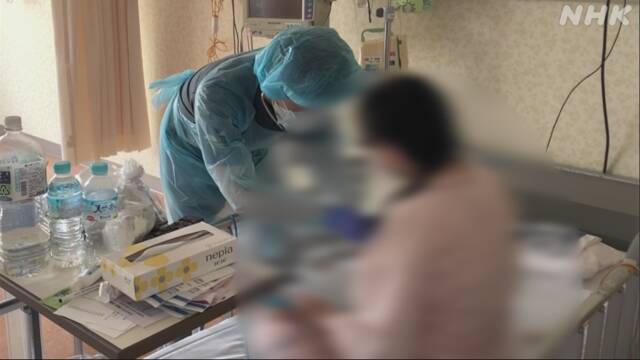A woman in her 40s who was infected with the mutant virus responded to the interview, saying, "I was careful to go out to the minimum, such as going back and forth between my home and work, but I was infected." I was surprised.
In hospitals in the metropolitan area, most of the patients have been replaced by mutant viruses, and we are becoming more vigilant against the mutant virus that will spread in India, which is said to be more infectious in the future.
At the Saitama Medical Center General Medical Center in Kawagoe City, Saitama Prefecture, the number of patients with the virus with the mutation "N501Y" has increased rapidly, and of the 13 patients, 10 out of 13 patients are infected with the mutant virus, excluding 3 under examination. I will.
It means that there are a number of cases in which people in their 30s and 40s, who have almost no underlying illness, become more severe, which was rarely seen in conventional patients.
This month, a woman in her 40s infected with the mutant virus was initially treated at home due to her age and symptoms, but after that, the oxygen status in her blood deteriorated and she was hospitalized.
The woman said, "I don't know where I got infected. I was careful, but I got infected." I was surprised at the strength of the infectivity of the mutant virus.
The hospital is also becoming more vigilant about the mutant virus that will spread in India, which is said to be even more infectious.
Dr. Hideaki Oka of the Department of Infectious Diseases said, "We must be cautious about the trend that" Indian strains "become mainstream. The rapid replacement is a threatening virus, and the number of patients in the field is increasing rapidly. I'm afraid that it will bounce back. "British stocks" have allowed the spread, but I would like you to go back to that reflection and prevent the next epidemic. "
A woman in her 40s, who is being treated at the Saitama Medical Center General Medical Center, responded to the interview in the form of a doctor asking a question on her behalf as her symptoms improved.
The infection was confirmed in the middle of this month, when a woman had a mild underlying illness, but due to her age and symptoms in her 40s, she was initially treated at home.
However, after that, the oxygen condition in the blood deteriorated and he was hospitalized.
Regarding the situation at that time, he recalls, "I had a pain in my joints, but my fever was about 37 degrees Celsius, and I was wondering what it was, but it lasted for three or four days."
Post-hospital tests revealed that he was infected with a virus that was first found in the United Kingdom and had a highly infectious mutation called "N501Y."
The woman fell into a condition requiring inhalation of oxygen, but as a result of the treatment, her symptoms improved and she was able to remove the oxygen mask.
Women thoroughly took measures such as wearing masks and disinfecting them, and kept the number of outings to a minimum, such as going back and forth between home and work and shopping for daily necessities.
The woman said, "I don't know where I got infected. Of course, I washed my hands properly and disinfected with alcohol every time I finished work. I really don't know at all." Was there.
On the other hand, he said, "I thought I was okay with the new Corona for more than a year, but it wasn't okay at all. I didn't think it would get worse until I was hospitalized." Instead, he appealed to many people to know that it is necessary to take thorough measures.
Dr. Hideaki Oka, who was treated, said, "I was able to remove the oxygen mask within a week of admission. The decision to transport was appropriate, and if it was a day or two later, I would definitely have a ventilator." I am.

